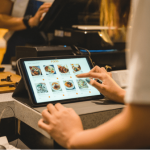If you do not have all three of these metrics on your radar screen at the same time, you are flying the profit picture in your food operation with at least one eye closed.
NB: This is an article from Hotel Financial Coach
All three metrics must work together at the same time to get the best view of the potential profitability of your food sales. Let’s explore these three different measurements and see what we find.
Subscribe to our weekly newsletter and stay up to date
Average Customer Cover
The first of the metrics is “average customer cover spend” or ACCS. That is the average amount of food sales per person served. To calculate this, you take the total food sales (only items in the food family) from a given period and divide it by the number of customers served in the same period. In the Uniform System of Accounts for the Lodging Industry 11th Edition we moved away from average cover to the average customer calculation. The difference is in the past we would exclude customer covers for people who did not consume food, now we include all customers served.
Basically, we are now including customers in the average customer calculation who only have a drink, but we do not include the drink revenue in the ACCS calculation. I am not sure it is better but that’s what is in the book says so let’s all do things the same way, please.
This calculation in my opinion is only slightly important. It proves two things: Is my pricing strategy and menu mix effective for getting more spend from each customer? Does the average customer spend going up or down? That is all it tells you. No insights on the cost of sales or profitability. It is the least effective measurement of the three when it comes to understanding profitability.
Food Cost Percentage
The second of the metrics is food cost, aka, cost of goods sold. From my days as a food and beverage controller, these words are welded into my brain. Opening food inventory (food family), plus food purchases, less closing inventory, less any legitimate credits for things like the cafeteria, promotion or food to bars, plus beverage to food. This is a very meaningful calculation. It is the raw gross profit number from the food operation before labor costs and expenses. It is the beginning of the profit story. This number expressed as a percentage is typically somewhere between 20-30% in hotels with full-service operations. I have seen it as low as the high teens and as high as the mid-30s on an annualized basis.
Read rest of the article at Hotel Financial Coach
The post What Really Counts and Why: 3 Metrics to Have on Your Radar appeared first on Revenue Hub.
































